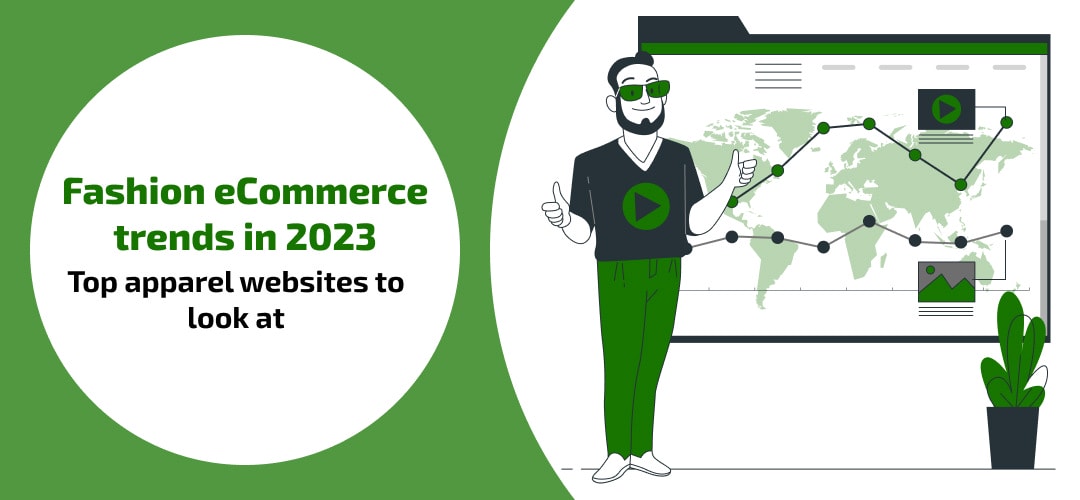
Apparel, footwear, and accessories eCommerce brands are consistently developing. The growth of digital innovation, globalization, and changes in buying behavior have propelled the fashion eCommerce sector.
In this article eCommerce trends and statistics within the fashion industry are considered since they directly impact business strategies. Also, we would like to present two online stores with exceptional features and designs for inspiration.
Fashion eCommerce Trends and Statistics
Understanding the state of the eCommerce fashion market nowadays and where it is going is essential when designing your own fashion eCommerce strategy.
We've highlighted some of the major trends and figures affecting the online fashion market as we look at 2024 and later, along with how they could improve your eCommerce company strategy.
The growing fashion eCommerce market, omnichannel retailing, individual recommendations, and BNPL payment options are laying the groundwork for a new method of approaching online fashion.
1. Drastically expanding fashion eCommerce market
According to Statista, the US fashion industry’s growth rate this year marks a slowdown from the previous years. In 2022, the industry grew at 8.3%, while the previous year saw growth hit 18.4%.
The outlook for fashion eCommerce is even more promising. According to recent projections, overall revenues are expected to reach $494.89 billion in 2023. Online sales are expected to increase from 22% in 2021 to 24% of the total fashion market revenue in 2023. By 2025, the online fashion market will have grown to $1.2 trillion. It's no surprise that the online fashion sector has exploded given growth drivers including digital channels, improved online access via mobile devices, and technological advancements.
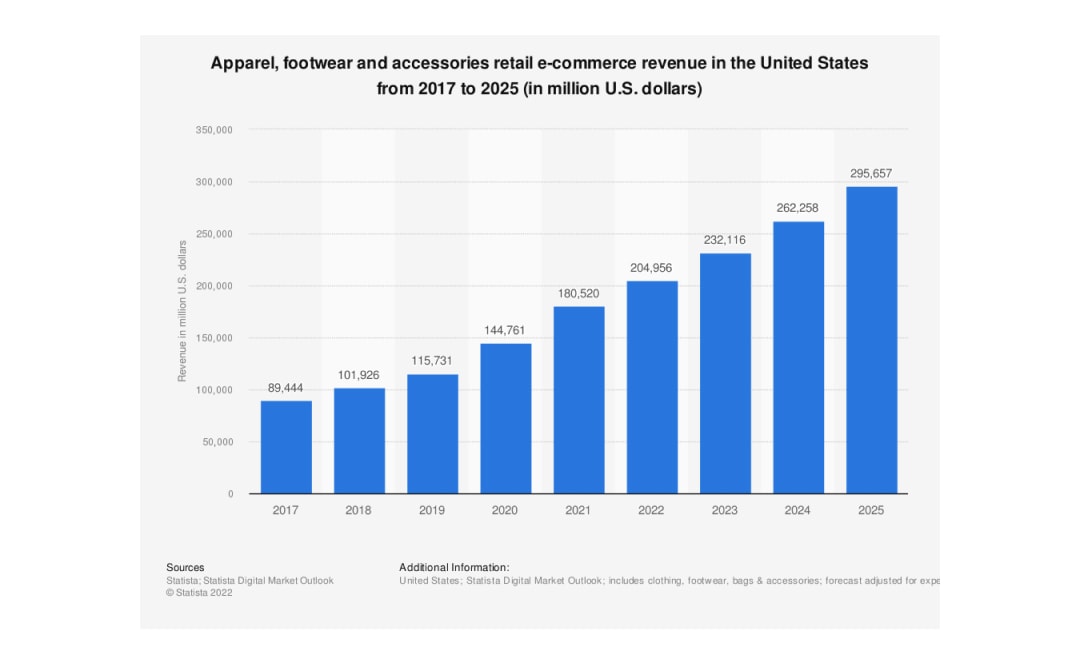
In light of this development path, eCommerce brands have the chance to maximize their development and profit from income opportunities. To learn more about creating a clothing online store read our blog post “How to start your online clothing store”.
2. Individual product recommendations that are backed by AI
The simplicity and convenience of eCommerce are two of its main benefits for apparel, footwear, and accessories brands. Furthermore, more fashion eCommerce companies are increasingly making use of their capacity to personalize user experiences using AI and deliver goods to customers as quickly as possible.
It's obvious that consumers are actively looking for online experiences that resemble or even surpass that in-store because 43% of purchases are made as a result of personalized recommendations. eCommerce businesses that monitor client activity can make tailored product suggestions based on past purchases, browsing patterns, and contextual targeting.
Adding smart and effective product recommendations can be easily done by developing an eCommerce store with platforms, like nopCommerce. In this eCommerce software, you may compose your own suggestions manually. However, you can integrate smart product suggestions with Google AI, as well as Amazon Personalize Integration. Also, you may add Similar products and Product offers features.
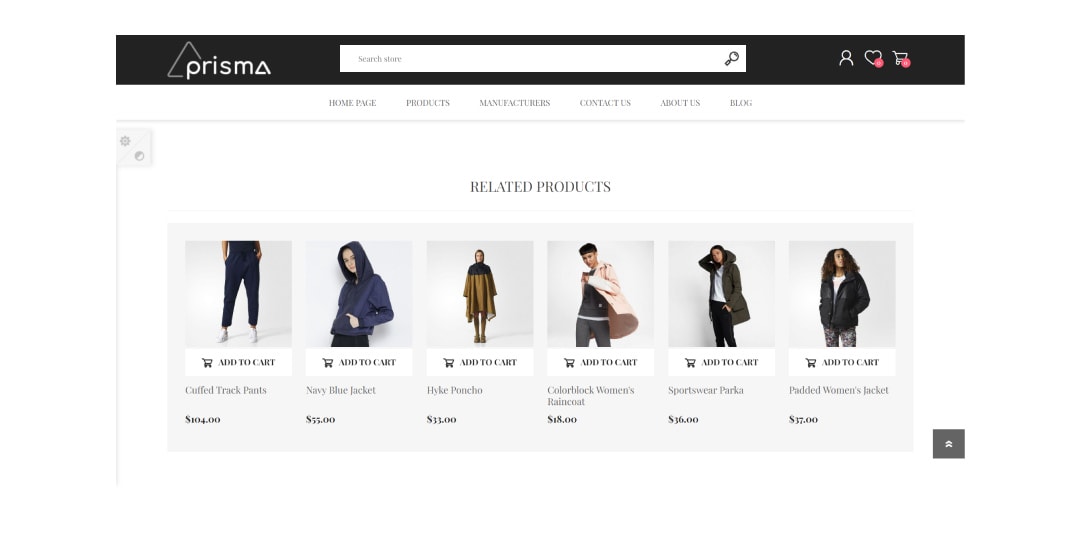
3. Omnichannel eCommerce strategy is essential to improve customer experience
Customers want a seamless, engaging experience across all platforms, both online and offline, whether they're shopping from home, in-store, or both. Brands can no longer depend only on in-person contact with customers, especially after a pandemic situation. Fashion businesses must figure out how to engage customers across a range of platforms.
It could be referred to as multichannel eCommerce, a retail strategy that is present on various channels that could not certainly provide a stable shopping experience. This issue can be solved by linking all channels to provide seamless transitions and communications within various channels. This marketing strategy called omnichannel eCommerce advances the multichannel strategy and might lead to a 33% increase in revenue. You can read more about omnichannel principles and how it differs from the multichannel approach in our blog article “Omnichannel eCommerce: general benefits and distinctions from multi-channel”.
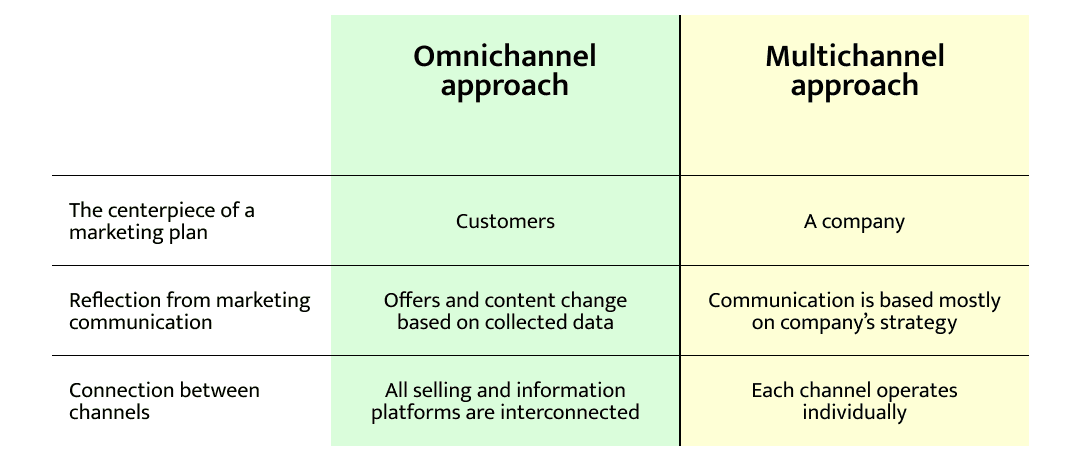
Fashion companies may start building their omnichannel marketing by choosing an appropriate software that may host and manage all communication channels. One of the best options is nopCommerce, an omnichannel eCommerce platform, that enables online store owners to integrate and interconnect various platforms out of the box.
Social commerce is a crucial method in building an omnichannel strategy for eCommerce fashion companies. Apparel, footwear, and accessories merchants now may contact clients via social media and marketplace solutions for Facebook and Google Shopping, eBay, Amazon, and many other selling platforms.
Online fashion businesses must use powerful eCommerce SEO techniques to raise their website's position and visibility because many online buyers start their shopping journey with search engines. All eCommerce fashion stores that are built with nopCommerce can effectively configure most technical SEO parameters out of the box without any integrations.
4. “Buy now, pay later” option wins more customers
Buy now, pay later is a brand-new form of payment plan that is being pioneered by fintech businesses. BNPL, a deferred payment option, enables customers to make purchases in a number of installments with or without prepayments. "Buy now, pay later" options carry little to no interest and offer no risk to the shopper's credit score.
These short-term loans make online transactions and customer experiences more smooth and payment management simpler for fashion stores. Offering a BNPL plan, according to RBC Capital Markets, boosts retail conversion rates by 20% to 30%.
Merchants who use the nopCommerce platform have the option to incorporate "buy now, pay later" with a variety of payment partners. Customers can choose a BNPL option from a variety of payment providers, including Afterpay, Klarna, PayPal (which is built into nopCommerce by default), and many others.
Fashion eCommerce websites with best practices
Let's look at two great fashion firms that are succeeding in the eCommerce market while keeping these trends in mind. These fashion eCommerce companies differentiate themselves from the competition in a cutthroat market by adopting recent trends and improving their online presence on a regular basis. Figure out how you can reach the same results.
Volvo Cars. The infrastructure of the whole retail supports
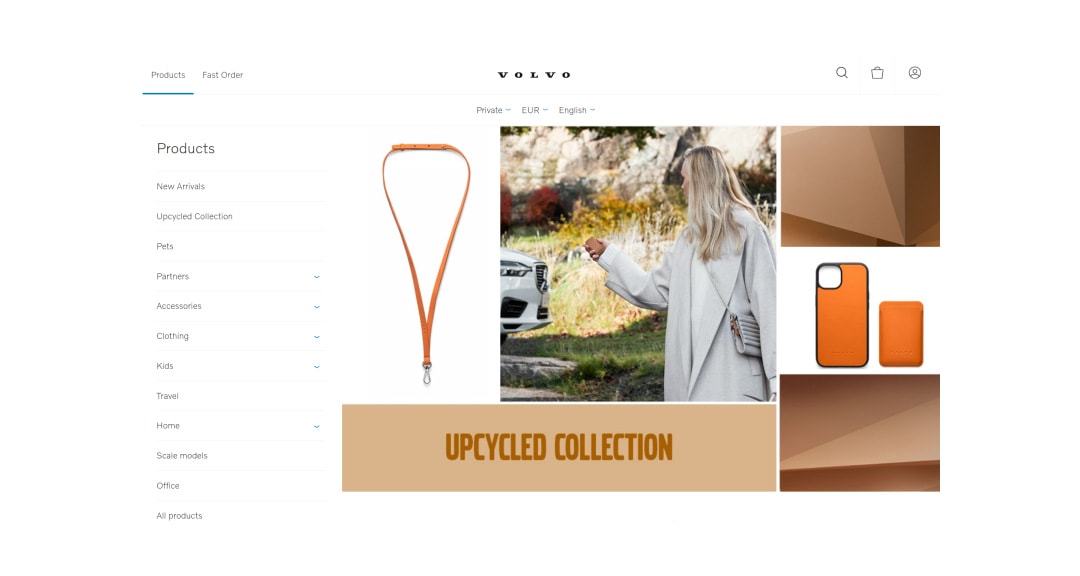
The Volvo Car Lifestyle Collection contains goods that satisfy the demands of all customers. Due to its open-source nature and capabilities, nopCommerce has been chosen to build an excellent eCommerce store.
Volvo Cars Collection required a full-circle eCommerce and retail solution that includes:
- CDN;
- ERP integration;
- Duty calculation;
- Customized customer roles/shop and prices setup by customer roles;
- Shipping integration.
As a result, with the final solution, this fashion brand acquired a 100% full retail support cycle, enabling customers from 120 countries to shop. Moreover, the eCommerce website has supported 6 languages, which also helped to create an exceptional customer experience.
Sailor. Identification as a top fashion brand via an online store
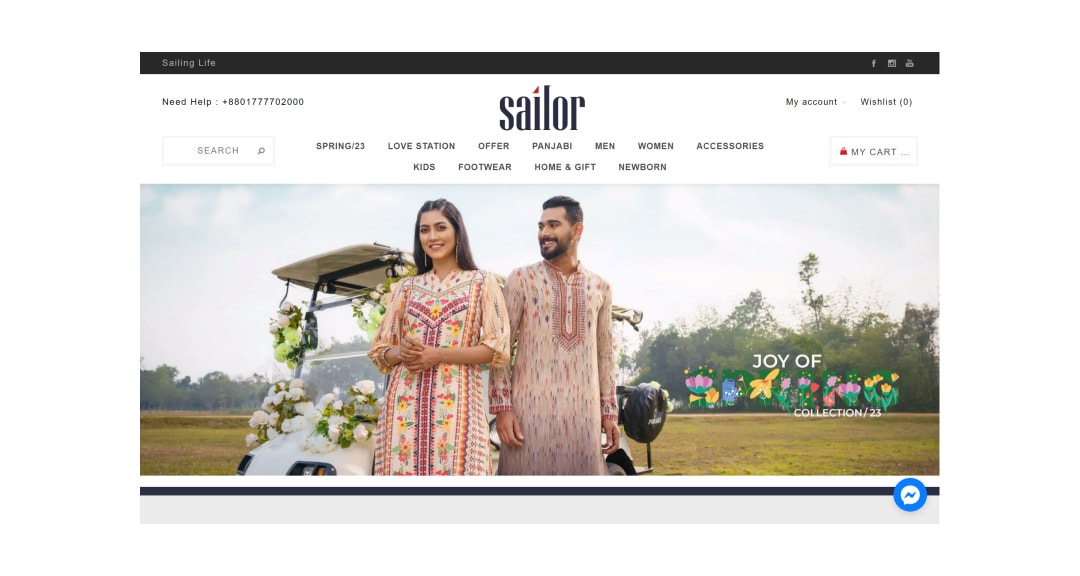
Men, women, and children may now all shop at the fashion and lifestyle Bangladeshi company Sailor, which sells everything from stylish western wear to cultural clothes online. In 2019, nopStation, a nopCommerce solution partner, worked to develop Sailor’s first POS-integrated eCommerce solution. During Covid-19 restrictions, the developed online presence enabled this fashion brand to continue growing and operating.
For smooth operation with POS systems, as well as for better customer service, it has been decided to use nopCommerce and add the following features and integrations:
- custom API endpoints to connect Sailor’s back-office operations in the POS system with the storefront;
- AWS S3 plugin is added for customer convenience;
- richer product search experience with an Algolia-hosted search service;
- secure and feature-rich payment and shipping providers.
Online presence development for Sailor has positively impacted the fashion brand’s business:
- a fully dedicated sales channel that attracts online customers;
- online sales accounted for 10% of total sales after around 2 years of operation;
- handles 4’000 orders and 200’000 visitors per month.
Wrapping up
It goes without saying that the fashion eCommerce industry is expanding and changing at an astounding rate, and as technology develops, this velocity will only increase. The ability of established fashion retailers to extend their reach from brick-and-mortar stores to eCommerce sites that reach customers around the world is excellent news for the industry.
Given that, it is obvious that this new potential also presents significant hurdles. It might be difficult to stay up with them. This struggle can be eased by selecting an appropriate apparel eCommerce software that can help you smoothly develop or integrate trending functionality. nopCommerce can be one of the best choices, no matter if a solution is online only or integrated with brick-and-mortar.
Finally, any trends should be justified by each fashion brand, as there is a chance that found tendencies can be overhyped and cannot have any regularly-working solution yet.